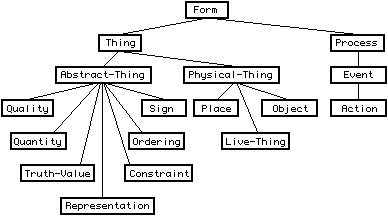
Lee Spector
lspector@hampshire.edu
Knowledge representation may be simultaneously the most profound and the most practical of topics in artificial intelligence.
From the Introduction to Readings in Knowledge Representation:
The notion of the representation of knowledge is at heart an easy one to understand. It simply has to do with writing down, in some language or communicative medium, descriptions or pictures that correspond in some salient way to the world or a state of the world. In Artificial Intelligence (AI), we are concerned with writing down descriptions of the world in such a way that an intelligent machine can come to new conclusions about its environment by formally manipulating these descriptions.
Despite this apparent simplicity in general goal, the research area of Knowledge Representation has a long, complex, and as yet non-convergent history. Despite the fact that just about every current AI program has what is called a "knowledge base" containing symbolic descriptions represented in some "representation scheme," there is still a vast amount to be understood before, for example, the knowledge in one system can be shared with another. There are tremendous subtleties in the notions of "representation," "knowledge," and their combination in AI.

A fragment from the "top" of an ISA hierarchy.
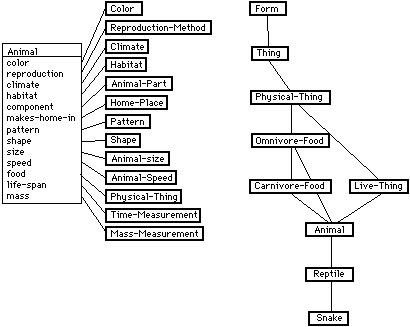
Part of a knowledge base about animals.
Aristotle, from The Categories:
Is the cause of the several species' possessing a given property the middle which is next to the universal, or the middle which is next to the species? Clearly it is that which is nearest to the particular species which is its subject, because this middle is the cause of the proximate subject's falling under the universal. E.g., C is the cause of D's being B; then C is the cause of D's being A, and B is the cause of being A for both C and itself.
![]()
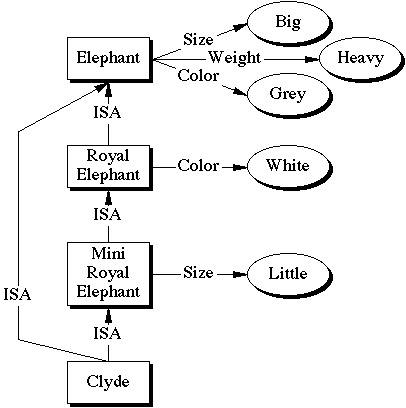
Which is more similar to a tomato: a tangerine or a fire-hydrant?
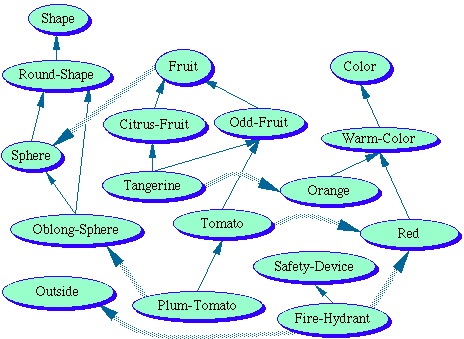


Douglas Lenat’s 10+ year project to create a knowledge base containing
common sense and roughly the knowledge found in an encyclopedia.
Two levels of representation
• Epistemological: logic-based
• Heuristic: fast special-purpose inference mechanisms
Very large
Slow
Many complex issues; we'll discuss in greater detail when we cover PLANNING.
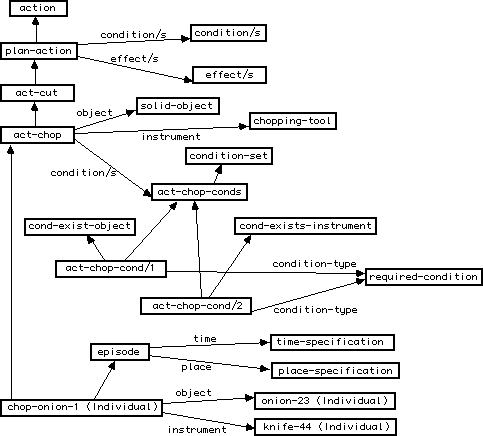
Conceptual Dependency is a theory about knowledge representation,
due to Roger Schank and his colleagues.
The theory involves the representation of all knowledge in terms of a small number
of primitives
ACT -- action
PP -- object (picture producer)
AA -- modifier of action (action aider)
PA -- modifier of object (picture aider)
ACT Primitives:
ATRANS -- transfer a relationship (give)
PTRANS -- transfer physical location of an object (go)
PROPEL -- apply physical force to an object (push)
MOVE -- move body part by owner (kick)
GRASP -- grab an object by an actor (grasp)
INGEST -- ingest an object by an animal (eat)
EXPEL -- expel from an animal's body (cry)
MTRANS -- transfer mental information (tell)
MBUILD -- mentally make new information (decide)
CONC -- conceptualize or think about an idea (think)
SPEAK -- produce sound (say)
ATTEND -- focus sense orgen (listen)
Waltz filtering of line drawings.
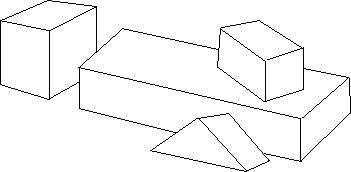


The Semantic Web...